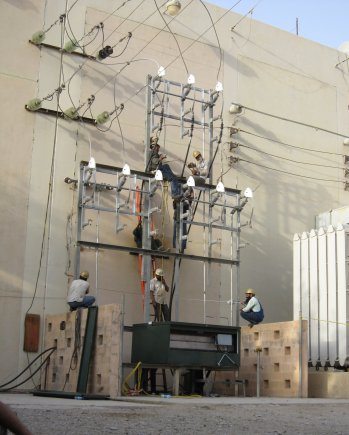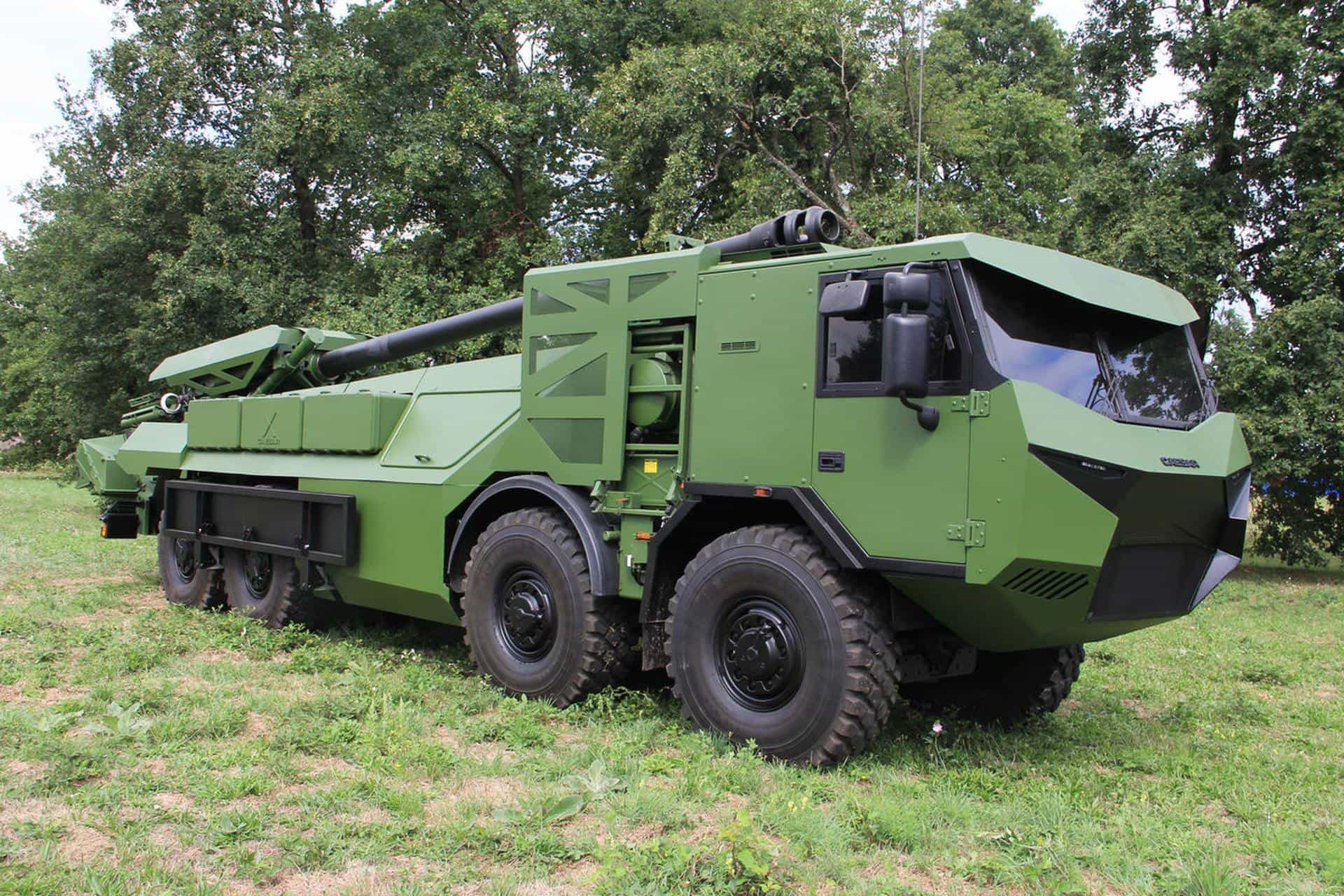Residents in Helmand and Kandahar provinces will get some improvement in the amount of electricity they receive, thanks to an interim measure designed to reduce the number of daily circuit interruptions occurring at the Kajaki Dam power house on the Helmand River.
While residents will see the results of the interim measure — the installation of a primary switch center — Da Afghanistan Breshna Sherkat, or DABS, will benefit from fewer shutdowns that cause wear and tear on the turbines generating this power. DABS is the Afghan utility power company.
The net result is twofold: more electricity for citizens and a prolonged lifespan for the two turbines.
Kajaki Dam has long been recognized as the source for sustainable and renewable power for Helmand and Kandahar provinces. Afghanistan and U.S. agencies are partnering to increase power generation and distribution over the next three years; part of the solution lies in installing a third turbine at the Kajaki power house and making other electrical repairs.
Recognizing the need to make immediate fixes until the longer term projects are complete, International Security Assistance Force Regional Command Southwest asked DABS what could be done quickly to provide the most benefit, according to Jim Murray, project manager for power, U.S. Army Corps of Engineers Afghanistan Engineer District-South, or AED-South.
The answer was feeder circuit protection for the turbines.
SWITCH CENTER INSTALLED TO ABSORB FAULTS
On July 11, technicians from DABS and AED-South finished a nine-day project that will reduce the number of faults — electrical overloads and shorts — causing the turbines to shut down.
“The new primary switch center will absorb many of the faults, so they won’t make their way to the turbines and shut them down,” Murray said. “When the switch center trips, the DABS operator resets the switch, which takes about 15 minutes, but the turbines remain operating. Previously, when the turbines shut down because of faults, the operators had to synchronize both of them to bring them back on line; this process generally took about an hour each time.”
“Resetting the switch center is similar to resetting a circuit breaker in your home electrical panel when the circuit breaker has tripped, though on a much larger scale,” Murray said.
Chief Warrant Officer 5 Thomas Black and his team of power specialists — Staff Sgt. Alex Brown, Sgt. Terry Dietrick and Sgt. Joshua Strausbaugh — worked with DABS to install the switch center. Black is deputy commander of Task Force Breshna Barq, a unit within AED-South charged with providing engineering and construction services to support projects for the Southern Electrical Power System which serves the Kandahar, Helmand and Uruzgan provinces. The power specialists are from the 249th Engineer Battalion (Prime Power).
“The switch center has measures that will protect the turbines,” Dietrick said. “It’s costly to repair or replace them, so the longer you can extend their life, the better.”
FAULTS IN THE TRANSMISSION LINES
The Kajaki power house distributes electricity through two lines: a 13.8kV line that transmits to Tangi and Kajaki villages and a 110kV line that transmits to Lashkar Gah and Kandahar City. Most of the faults occur in the 13.8kV line because of two failing circuit breakers that could not protect the turbines from faults. The new switch center replaces these circuit breakers.
DABS power house operators told Black that circuit interruptions on the 13.8kV line occurred as many as 10 times a day before the switch center was installed, thus shutting down the turbines. Consequently, no power was distributed over either line until the turbines were powered up again.
“Residents served by the Kajaki power house will now have more electricity because the turbines will be down less,” Murray said. “For people on the 13.8kV line, this doesn’t mean they won’t have outages. When outages are stopped at the switch center, they only last a short period.”
According to Black, the new switch center will not stop the faults completely, but it will isolate many of them from getting to the turbines and thus taking down the entire grid. In addition, the switch center will lessen the impact of any faults that do make it to the turbines.
COLLABORATION AMONG MANY
Black said this project was a collaborative effort, representative of all the work being done by the Afghan and U.S. partners to improve SEPS.
“DABS engineers did the majority of the work to construct the air switch assembly, which we call the rack,” Black said. “They removed the inoperable switches, helped to install the switch center and made the connections on the 13.8kV line.
“The II MEF (Marine Expeditionary Force) transported our team, airlifted our equipment and provided security,” Black continued. “Black and Veatch (the company working for the U.S. Agency for International Development on the power projects) provided lift assets and our basic life support needs. Without their assistance lifting the rack into place, our work would have been much more labor intensive and taken much longer.”
The joint team spent the first few days inventorying equipment and materials, testing cables and fabricating the frame. When it was time to begin the installation, DABS disconnected the 13.8kV line from the grid.
“The line was out of service for just over three days, with no power provided to Kajaki and Tangi villages since there was no safe way to create a bypass transmission line,” Black said. “DABS met with the elders in advance to explain why it was necessary to disconnect the power line. We wanted the citizens to fully understand that their power would be disrupted while we worked on improving the amount of power they receive.”
THE TECHNICIANS PARTNER
Dietrick, the project manager for the switch installation, said that while the project was about helping to bolster the infrastructure, it was also about building capacity with the DABS technicians.
“The work came easy to them because of their practical experience,” Dietrick said. “We showed them how to operate the switches correctly and the industry standards for safely handling cable. They did the work on their own fairly quickly.”
The joint team worked from sun up to sun down every day.
“The DABS technicians were with us every step of this project,” Strausbaugh said. “They stayed with us until the mission was done. They have a good work ethic. It was a great experience for them and us. Because of this project, they will have more reliable power, and that’s important for winning the hearts and minds of the people.”
“This project helped strengthen the relationship between DABS and Corps of Engineers technicians,” Brown said. “There is a lot of work that needs to be done to improve the power system. This small project will help in the short term until the major upgrades begin.”
As part of the plan to improve SEPS, the U.S Agency for International Development, or USAID, will install a third turbine at Kajaki Dam to increase generation capacity from the current 32 megawatts to approximately 52 megawatts.
The United States built the Kajaki Dam power house in the 1950s, but it has deteriorated due to decades of conflict. In the last few years, USAID rehabilitated the two existing generators to restore power production to its current level.
In addition to installing the third turbine, the Afghan and U.S. governments are planning projects to provide sustainable and affordable power throughout southern Afghanistan to foster economic growth and improve the lives of citizens.










